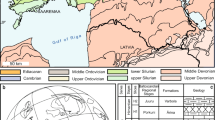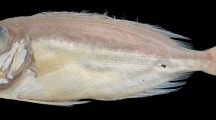Abstract
Curvemysella paula is a markedly crescent-shaped bivalve that lives inside snail shells occupied by hermit crabs. Here, we describe the unique symbiotic life, growth pattern, and reproductive biology of this bivalve, based on specimens collected from the shallow, muddy bottom of the Seto Inland Sea, Japan. C. paula was found attached to columellae in the siphonal canal, mainly of nassariid snail shells occupied by two types of hermit crabs: Diogenes edwardsii (Diogenidae) and Spiropagurus spiriger (Paguridae). The crescent-shaped shell of C. paula is an adaptation to symbiotic life in the narrow interspace between the snail shell and the hermit-crab abdomen. C. paula is a protandric hermaphrodite. In our samples, each host snail shell harbored one (or rarely a few) large female and several males. All the female bivalves settled on the host shells with their anterior end facing outward and benefited from currents created by the hermit crab when feeding. In the muddy bottom, snail shells are a limited resource for both the hermit crabs and symbiotic bivalves. The bivalves benefit from the mobility of the hermit crabs, which prevent the shells from becoming buried in the mud. C. paula represents the only example of obligate commensalism with hermit crabs found in Bivalvia.












Similar content being viewed by others
References
Boss KJ (1965) Symbiotic erycinacean bivalves. Malacologia 3:183–195
Boyko CB, Mikkelson PM (2002) Anatomy and biology of Mysella pedroana (Mollusca: Bivalvia: Galeommatoidea), and its commensal relationship with Blepharipoda occidentalis (Crustacea: Anomura: Albuneidae). Zool Anz 241:149–160
Brown DJ, Olivares CA (1996) A new species of Crepidula (Mollusca: Mesogastropoda: Calyptraeidae) from Chile: additional characters for the identification of the eastern Pacific plannar Crepidula group. J Nat Hist 30:1443–1458
Collin R (1995) Sex, size, and position: a test of models predicting size at sex change in the Protandrous Gastropod Crepidula fornicate. Am Nat 146:815–831
Collin R (2000) Phylogeny of the Crepidula plana (Gastropoda: Calyptraeidea) cryptic species complex in North America. Can J Zool 78:1500–1514
Itani G, Kato M, Shirayama Y (2002) Behaviour of the shrimp ectosymbionts, Peregrinamor ohshimai (Mollusca: Bivalvia) and Phyllodurus sp. (Crustacea: Isopoda) through host ecdyses. J Mar Biol Assoc UK 82:69–78
Jones CG, Lawton JH, Shachak M (1994) Organisms as ecosystem engineers. Oikos 69:373–386
Jones CG, Lawton JH, Shachak M (1997) Positive and negative effects of organisms as physical ecosystem engineers. Ecology 78:1946–1957
Kato M (1998) Morphological and ecological adaptations in montacutid bibalves endo- and ecto-symbiotic with holothurians. Can J Zool 76:1403–1410
Kato M, Itani G (1995) Commensalism of a bivalve, Peregrinamor ohshimai, with a thalassinidean burrowing shrimp, Upogebia major. J Mar Biol Assoc UK 75:941–947
Kato M, Itani G (2000) Peregrinamor gastrochaenans (Bivalvia: Mollusuca), a new species symbiotic with the Thalassinidean Shrimp Upogebia carinicauda (Decapoda: Crustacea). Species Divers 5:309–316
Morton B (1972) Some aspects of the functional morphology and biology of Pseudopythina subsinuata (Bivalva: Leptonacea) commensal on stomatopod crustaceans. J Zool Lond 166:79–96
Morton B, Scott PH (1989) The Hong Kong Galeommatacea (Mollusca: Bivalvia) and their hosts, with descriptions of new species. Asian Mar Biol 6:129–160
Navarro JM, Chaparro OR (2002) Grazing-filtration as feeding mechanisms in motile specimens of Crepidula fecunda (Gastropoda: Calyptraeidae). J Exp Mar Biol Ecol 270:111–122
O’Foigel D (1985) Form, function, and origin of temporary Dwarf males in Pseudopythina rugifera (Carpentar, 1864) (Bivalvia: Galeommatacea). Veliger 27:245–252
Savazzi E (2001) A review of symbiosis in the Bivalvia, with special attention to macrosymbiosis. Paleontol Res 5:55–73
Shoji K (1938) A new commensal bivalve attached to a burrowing shrimp. Venus 8:119–128
Tanaka T (1991) Symbiosis of Curvemysella paula and a hermit crab. Chiribotan 21:82–84
Taylor PD (1994) Evolutionary palaeoecology of symbioses between bryozoans and hermit crabs. Hist Biol 9:157–205
Rosewater J (1984) A new species of Leptonacean bivalve from Northern Peru (Heterodonta: Veneroida: Lasaeidae). Veliger 27:81–89
Williams JD, McDermott JJ (2004) Hermit crab biocoenoses: a worldwide review of the diversity and natural history of hermit crab associates. J Exp Mar Biol Ecol 305:1–128
Yipp MW (1980) The functional morphology of the organs of feeding and digestion in Crepidula walshi (Prosobranchia: Calyptraeidae). In: Morton B (ed) Proceedings of the first international workshop on the malacofauna of Hong Kong and Southern China. Hong Kong University Press, Hong Kong, pp 221–252
Author information
Authors and Affiliations
Corresponding author
Additional information
Communicated by S. Nishida, Tokyo.
Rights and permissions
About this article
Cite this article
Goto, R., Hamamura, Y. & Kato, M. Obligate commensalism of Curvemysella paula (Bivalvia: Galeommatidae) with hermit crabs. Mar Biol 151, 1615–1622 (2007). https://doi.org/10.1007/s00227-006-0518-7
Received:
Accepted:
Published:
Issue Date:
DOI: https://doi.org/10.1007/s00227-006-0518-7




